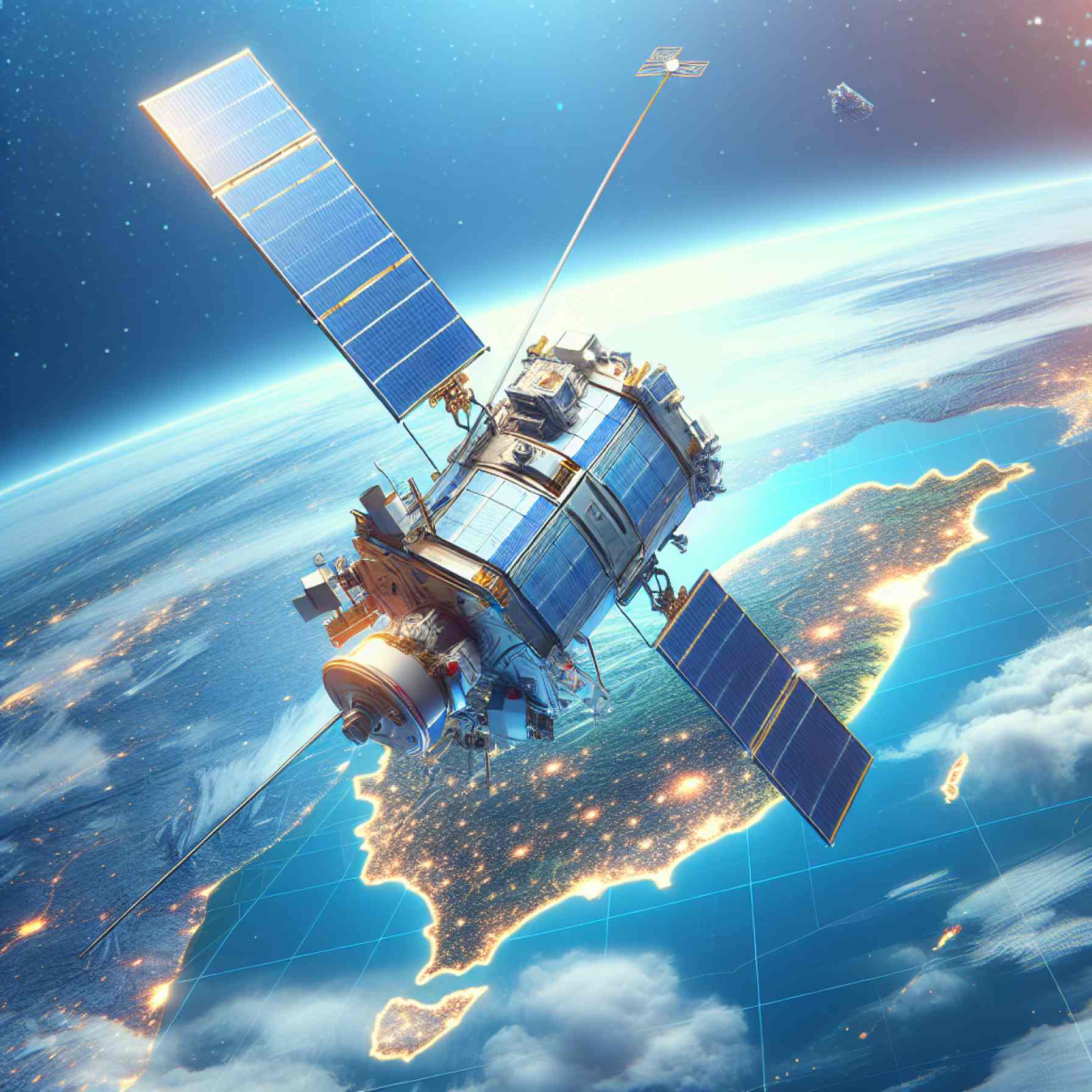- Taiwan aims to launch four independent satellites by the end of the decade to establish its own satellite network.
- This initiative is fueled by geopolitical tensions and a desire to reduce reliance on external networks like SpaceX’s Starlink.
- The endeavor leverages Taiwan’s strengths in technology and manufacturing, mirroring its success in the semiconductor industry.
- International collaboration plays a crucial role, with partnerships involving Japan and Europe enhancing expertise and technology sharing.
- The project faces challenges related to engineering, financial resources, and creating robust ground infrastructures.
- Taiwan’s efforts showcase its technological resilience and aspire to redefine its role in the global space community.
- The initiative symbolizes a broader potential for sovereign resilience and innovation beyond traditional superpowers.
A cascade of fiery oranges and deep blues signal dawn over the verdant hills of Taiwan. Within this technological beacon of East Asia, an ambitious vision brews—one that could redefine its digital footprint in the cosmos. Imagining a future unshackled from external satellite networks, Taiwan strides forward with a plan to loft four of its own satellites into the low expanse of Earth’s orbit by the decade’s end.
This vision, while grand, is no mere act of ambition but a strategic pivot incited by tension. The delicate dance of geopolitics took an unexpected turn in late 2023 when a public clash with SpaceX’s enigmatic founder, Elon Musk, left Taiwan hunting for alternatives to Starlink, Musk’s global satellite network. This unexpected rift lit a fire under Taiwan’s national initiative to cultivate independent satellite communications—a hefty endeavor even for a nation famed for its manufacturing prowess.
Taiwan’s technological landscape, vibrant yet gritty, is no stranger to challenges. As they weave this intricate satellite tapestry, they tap into a rich vein of engineering mastery and innovation, demonstrating resilience that parallels its rise in the semiconductor industry. Local companies and international allies alike rally to support this celestial cause, investing in research and development to rival well-established space giants.
The journey is arduous. Crafting a constellation capable of global connectivity demands not just engineering finesse but significant financial resources and risk assessment. Yet, in this crucible of pressure, Taiwan’s identity as a technological titan crystallizes further. The nation navigates through a constellation of logistical challenges, from ensuring sustainable launch capacities to developing ground control infrastructures robust enough to handle a web of communications relays.
A rich palette of international collaborations colors Taiwan’s satellite ambition. Partnerships with nations such as Japan and European entities offer Taiwan the expertise and technology it seeks to propel its spacefaring plans forward. This global embrace not only underscores Taiwan’s stature as a crucial partner in the tech ecosystem but also reflects an emerging multipolar space community.
Through these celestial aspirations, Taiwan emerges as a symbol of sovereign resilience in the digital age. Its quest to forge an independent satellite network sends a resonating message to the world: mastery in the cosmos is not solely the forte of superpowers; it is within grasp of any nation bold enough to trust in its ingenuity and persistence.
As Taiwan gazes skyward, the world watches, anticipating how this island nation’s journey into the starry unknown might inspire a broader narrative—a tale of innovation, diversity, and collaboration, charting new courses across the cosmic seas.
How Taiwan’s Ambitious Satellite Initiative is Changing the Game
Taiwan’s Independent Satellite Network: An Emerging Space Power
Taiwan’s decision to develop and launch four indigenous satellites into Earth’s low orbit by the end of this decade marks a pivotal shift in its digital strategy. Triggered by geopolitical tensions and a dispute with SpaceX founder Elon Musk, this initiative represents Taiwan’s quest for technological independence.
Reasons Behind the Move
– Geopolitical Tensions: Taiwan’s public clash with Elon Musk and SpaceX over reliance on Starlink’s satellite network highlighted the need for sovereign satellite capabilities.
– Strategic Independence: Developing its own satellites positions Taiwan to reduce dependence on foreign technologies and enhances national security by controlling its own communication networks.
Current Landscape and Challenges
1. Engineering Challenges: Building a satellite network is complex, requiring advanced engineering expertise and a robust R&D infrastructure.
2. Financial Investment: The endeavor demands significant capital—estimated to be in the billions—to cover the costs of design, production, and launch.
3. Logistical Hurdles: Efficient launch capabilities and ground control infrastructure are crucial to managing communications relays and ensuring network stability.
Collaborative Efforts and Global Partnerships
Taiwan is capitalizing on its strong technological ecosystem, partnering with nations like Japan and European countries to exchange expertise and technology. These collaborations not only enrich Taiwan’s satellite initiative but also signal the island’s critical role in the global technology arena.
Market Forecasts and Industry Trends
– Growing Space Economy: According to the “Satellite Industry Association,” the satellite market is projected to surpass $556 billion by 2030. Taiwan’s entry into this market could provide significant economic opportunities.
– Technological Innovation: Taiwan’s semiconductor expertise can lend itself to cutting-edge satellite technologies, potentially leading to advancements in satellite miniaturization and performance.
Pros and Cons Overview
– Pros:
– Increased national security and reduced reliance on foreign networks.
– Potential economic growth from new technological developments.
– Enhanced profile in the global tech ecosystem.
– Cons:
– High financial burden and investment risks.
– Complex technical and logistical challenges.
– Possible geopolitical repercussions from other regional powers.
Real-World Use Cases
– Disaster Management: Satellites can provide essential communication tools during natural disasters.
– Maritime Communications: Enhancing Taiwan’s maritime navigation and safety monitoring.
– Agricultural Management: Data from satellites could be used to improve farming techniques and monitor environmental changes.
Conclusion and Actionable Recommendations
For Taiwan to navigate the complexities of establishing a successful satellite network, it must ensure continued investments in R&D and foster robust international partnerships. Additionally, leveraging its existing semiconductor industry capabilities can position Taiwan as a key innovator in satellite technologies.
Quick Tips:
– Invest in Education and Workforce Training: Develop expertise in satellite technology through educational programs.
– Strengthen International Alliances: Collaborate with other countries to share knowledge and resources.
– Focus on Sustainable Practices: Incorporate environmentally friendly practices in satellite production and disposal.
By embracing these strategies, Taiwan can solidify its position in the ever-evolving global space industry.
For more insights into Taiwan’s tech advancements, visit Taiwan Government Portal.











